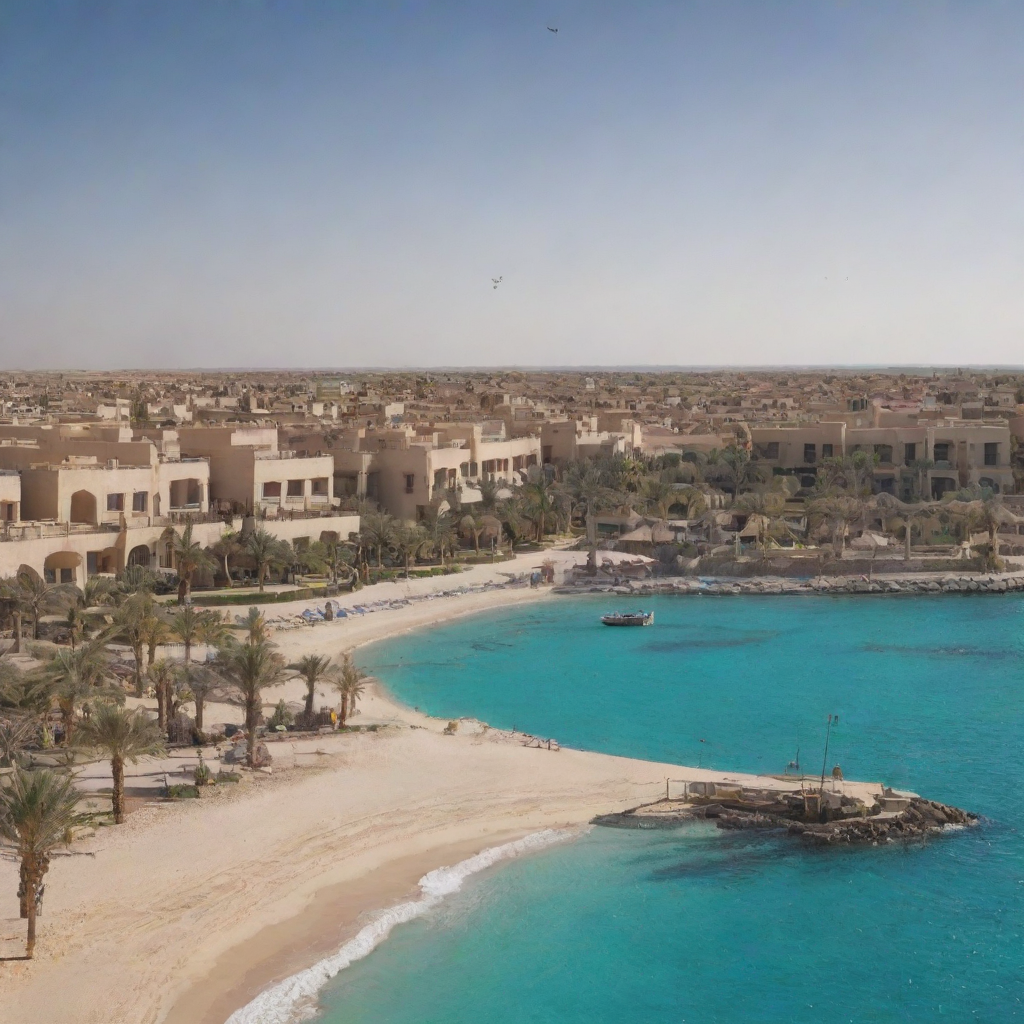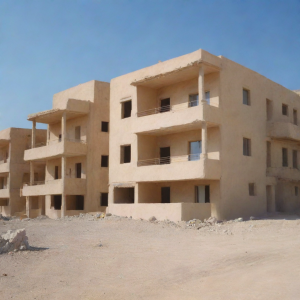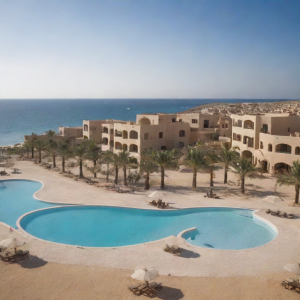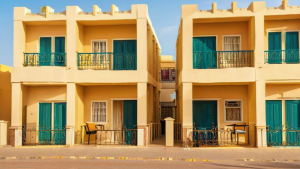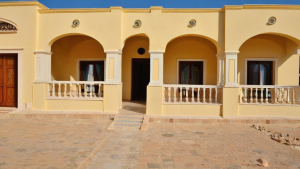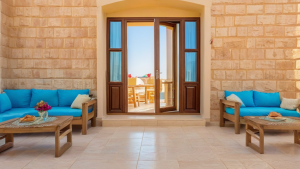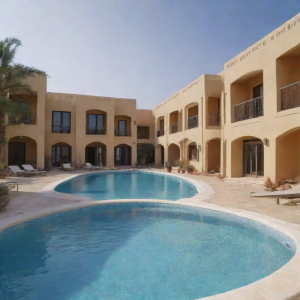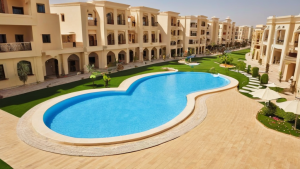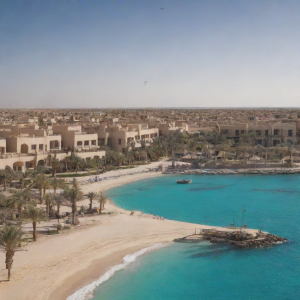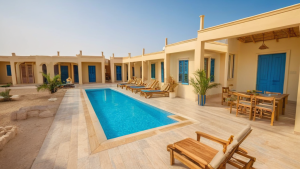Summary about owning and buying property in Hurghada, Egypt.
- The city’s vibrant expansion is not accidental but the result of deliberate infrastructure development, strategic investment in tourism and real estate, and its unique geographic advantages.
- The Egyptian government has prioritized the development of Hurghada by improving road networks, expanding airport capacity, and incentivizing foreign direct investment (FDI) in the tourism and hospitality sectors.
- Real estate development is not only for tourists but also appealing to Egyptians looking to invest or settle in a city that promises potential gains and a high living standard.
- This diversification helps attract a wider demographic of visitors and reduces vulnerability to global tourism fluctuations, a challenge many other Egyptian cities face due to their dependence on specific economic sectors.
- In contrast, Hurghada’s consistent investment in diversified tourism activities, combined with government backing and private sector enthusiasm, has created a more balanced and sustainable growth model.
Hurghada’s growth is outperforming Egypt’s major cities: key drivers and economic impacts
Understanding Hurghada’s economic momentum
Over recent years, Hurghada,a picturesque coastal city on Egypt’s Red Sea,has witnessed an economic growth trajectory that surpasses that of traditional urban centers like Cairo, Alexandria, and even Luxor. This dynamic progress positions Hurghada as a rising star in the Egyptian economy, attracting attention from investors, tourists, and local entrepreneurs alike.
The city’s vibrant expansion is not accidental but the result of deliberate infrastructure development, strategic investment in tourism and real estate, and its unique geographic advantages. While Egypt’s major cities have long depended on manufacturing, government services, and commerce, Hurghada’s growth taps into a different, yet equally potent engine: the tourism and leisure sector.
Key drivers fueling Hurghada’s rapid development
Strategic location and natural attractions
Hurghada is located along the Red Sea coast, offering some of the most breathtaking coral reefs, crystal-clear waters, and year-round sunny weather. This natural beauty provides a strong foundation for tourism, drawing millions of visitors reliably each year. The appeal is enhanced by the city’s accessibility through Hurghada International Airport, which connects the city directly to major European and Middle Eastern destinations.
Government investments in infrastructure
The Egyptian government has prioritized the development of Hurghada by improving road networks, expanding airport capacity, and incentivizing foreign direct investment (FDI) in the tourism and hospitality sectors. These initiatives have reduced travel time, boosted service quality, and facilitated smoother operations for businesses.
Real estate and hospitality boom
One of the most visible signs of Hurghada’s growth is the construction boom. Luxury resorts, hotels, residential complexes, and entertainment facilities are mushrooming rapidly. Real estate development is not only for tourists but also appealing to Egyptians looking to invest or settle in a city that promises potential gains and a high living standard.
Diversification beyond traditional tourism
While Hurghada is famous for beach and diving tourism, it has also diversified offerings to include desert safaris, cultural tours, and water sports. This diversification helps attract a wider demographic of visitors and reduces vulnerability to global tourism fluctuations, a challenge many other Egyptian cities face due to their dependence on specific economic sectors.
Economic impacts highlighting Hurghada’s exceptional growth
Job creation and employment opportunities
Hurghada’s expanding hospitality and construction sectors have generated hundreds of thousands of jobs. Local communities benefit from direct employment in hotels and resorts, as well as indirect roles like tour guides, artisans, and service providers. This wide array of opportunities supports socio-economic development and reduces urban migration pressures on major cities.
Increased foreign investment and tourism revenue
Hurghada’s success has attracted significant foreign investment, not just in hotels and resorts but also in related businesses such as retail, restaurants, and transportation. The inflow of capital translates directly into increased tax revenues and government funds, which can be channeled into further improvements and public services.
Expansion of local businesses
The rise in tourist and resident numbers stimulates local entrepreneurship. From souvenir shops to aquatic sports centers and local eateries, business owners capitalize on the growing market. This broad-based economic activity strengthens the city’s resilience, helping avoid reliance on a single industry.
Real estate value appreciation
Property values and rental yields in Hurghada have appreciated faster than many Egyptian urban centers. Investors eyeing the real estate market recognize the city’s potential for steady returns backed by continuous demand. This trend supports a wealth generation cycle for both local investors and outside stakeholders.
Comparing with Egypt’s major cities
While Cairo and Alexandria remain vital to Egypt’s overall economy, their growth rates are tempered by large populations, infrastructural challenges, and saturation of established industries. Luxor and Aswan continue to rely heavily on cultural tourism, which is typically seasonal and sensitive to global conditions.
In contrast, Hurghada’s consistent investment in diversified tourism activities, combined with government backing and private sector enthusiasm, has created a more balanced and sustainable growth model. This has enabled the city to outperform in terms of GDP contribution, employment growth, and infrastructural modernization.
The road ahead for Hurghada and Egypt’s economic landscape
Hurghada’s upward trajectory offers valuable lessons for other Egyptian cities aiming to revitalize their economies. Emphasizing unique local assets, investing in infrastructure, and fostering a business-friendly environment are critical strategies.
For you as a reader, whether you are an investor, traveler, or policymaker, monitoring Hurghada’s progress provides insights into how focused development can unlock potential in previously underexplored regions. The city exemplifies how leveraging natural beauty alongside smart economic planning can create lasting prosperity.
Comparing urban development: how Hurghada stands out against cairo, alexandria, and other cities
Rapid economic expansion fuels Hurghada’s urban growth
Hurghada’s growth is outperforming Egypt’s major cities, such as Cairo and Alexandria, due to its dynamic economic expansion and a strategic focus on tourism and real estate development. Unlike the highly congested and industrialized nature of Cairo, Egypt’s capital, Hurghada has managed to evolve as a coastal hub, attracting both international tourists and investors. This surge has led to accelerated urban development characterized by new infrastructure projects, modern housing estates, and enhanced public services, positioning Hurghada as a leading city in Egypt’s development landscape.
Comparative infrastructure development: Hurghada vs. other cities
When you compare Hurghada’s infrastructure growth with that of Alexandria or Cairo, you will notice distinct differences in planning and implementation. Hurghada has prioritized upgrading transport networks, including the expansion of its international airport and improved roadways, to support high tourism demand. Cairo and Alexandria, though large metropolitan centers, face challenges such as traffic congestion and aging infrastructure, which slow down their urban progress. Hurghada’s focused investment in modern amenities and sustainable solutions has given it an edge in creating a livable, attractive environment.
Tourism as a catalyst for urban development
A crucial factor behind Hurghada’s urban outperformance is its thriving tourism industry. The Red Sea’s natural beauty, pleasant climate, and recreational opportunities draw millions annually. This steady influx of visitors has spurred the development of luxury hotels, resorts, restaurants, and entertainment facilities. In contrast, while Cairo and Alexandria also benefit from historical tourism, the impact on urban growth has been more moderate due to infrastructural constraints and overcrowding.
Additionally, Hurghada’s government and private sector partnerships have actively enhanced tourism infrastructure, facilitating seamless visitor experiences. These efforts continuously improve urban services, including water supply, waste management, and public safety, which are essential for sustainable city growth.
Diversification of economic activities beyond tourism
Although tourism remains a pillar, Hurghada is diversifying its economy, which is a key factor boosting its urban expansion faster than other Egyptian cities dominated by traditional industries. Emerging sectors include renewable energy initiatives and maritime services that provide new employment opportunities and attract skilled labor. This diversification helps stabilize Hurghada’s growth against external shocks, such as tourism downturns, keeping the urban environment vibrant and resilient.
Urban planning and environmental considerations
Many Egyptian cities face urban sprawl and pollution challenges due to rapid growth. Hurghada, however, emphasizes sustainable urban planning to maintain its natural coastal environment while expanding. The city’s governance encourages green spaces, regulates building heights, and supports eco-friendly construction. These practices not only preserve Hurghada’s appeal but also promote healthy living conditions for residents and visitors alike.
The role of real estate and housing developments
Real estate development in Hurghada is booming, driven by increasing demand for residential units, holiday homes, and commercial spaces. This contrasts with Cairo and Alexandria, where real estate markets often suffer from saturation and affordability issues. Hurghada’s housing market remains attractive due to modern designs, proximity to amenities, and integration with urban services.
Key aspects of Hurghada’s urban housing growth include:
- Emergence of gated communities with security and recreational facilities.
- Availability of mixed-use developments combining residential, commercial, and leisure elements.
- Investment in affordable housing to accommodate local workers alongside luxury properties.
Population growth and demographic shifts
Population trends underscore Hurghada’s rapid urban growth. While Cairo continues to hold Egypt’s largest population, its rate of urban expansion is flattened by space constraints. Hurghada, benefiting from its coastal location, has attracted both internal migrants and expatriates seeking employment and lifestyle opportunities. This demographic shift has increased demand for educational institutions, healthcare facilities, and public transportation, stimulating further urban investments.
Challenges and opportunities remaining ahead
Despite its impressive growth, Hurghada faces ongoing challenges typical of rapidly expanding cities. These include ensuring sustainable water usage, managing traffic with the rise in vehicles, and balancing tourism growth with environmental protection. However, its proactive governance and strategic development plans offer a promising pathway to overcoming these obstacles.
The city’s focus on integrating smart city technologies and enhancing civic engagement gives Hurghada an opportunity to model urban development that is both progressive and inclusive, setting a benchmark for other Egyptian urban centers.
Why you should watch Hurghada’s urban development
If you are interested in witnessing a city that exemplifies balanced, rapid growth in Egypt, Hurghada is the place to watch. Its unique combination of strong economic drivers, commitment to sustainable planning, and ability to attract both tourists and new residents makes its urban development trajectory stand out. Comparing it to Cairo, Alexandria, and other cities showcases how focused regional development, coupled with smart investment in infrastructure, can result in a thriving urban environment.
As Egypt continues to modernize and expand its urban footprint, Hurghada serves as a compelling case study illustrating how coastal cities can outperform traditional capitals through targeted growth strategies and efficient resource management.
Hurghada’s rapid growth clearly sets it apart from other major Egyptian cities like Cairo and Alexandria. The city’s strategic focus on tourism, combined with continuous infrastructure investments and economic diversification, has fueled its rise as a standout urban hub. While traditional centers face challenges such as congestion and slower pace of development, Hurghada harnesses its natural assets and innovative projects to attract both local and international investors. This dynamic growth not only reshapes the city’s skyline but also strengthens its role as a key driver in Egypt’s economy. For anyone interested in the future of urban expansion in Egypt, Hurghada offers an inspiring example of how balanced development and sectoral focus can power impressive economic progress, outperforming even the country’s most established cities. The ongoing transformation in Hurghada continues to attract attention as a model of successful urban planning that combines opportunity, accessibility, and sustainability to benefit residents and visitors alike.

